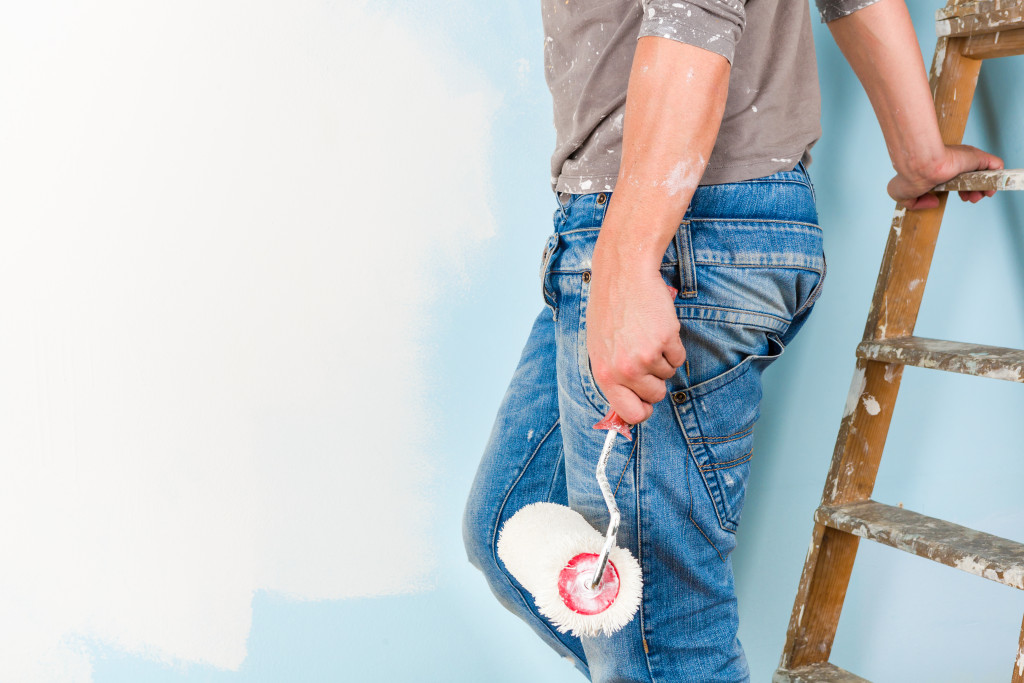A fresh coat of paint is like botox for your home. It’s an injection of new vitality into a structure that has stoically withstood the wear and tear of years. And unlike a surgical procedure, it’s a job that can be done by a non-professional.
Anyone with a brush and a bucket of paint can take on this task. But there are still some techniques that the pros use in order to get a great result. And the difference in quality can be apparent even to the untrained eyes.
When you’ll be living with the outcome day in, day out, you might want to pick up a few tips from real artists. Here are some things that painters do each time they make art, and which you can apply to elevate your home’s paint job.
Mix your own paint
Professional paint manufacturers offer their products in a wide variety of colors. Choosing what you like can be as simple as walking into a hardware store with a sample image, and matching it with the swatches available.
However, availability is the key. Sometimes, the exact shade you have in mind isn’t being sold. Cost may also be a factor. This is a DIY job, after all. You could easily save 50% or more off the price of store-bought brands by purchasing end-of-line paint or repurposing leftovers.
Mixing your own paint gives you full control over color. As long as you avoid basic mistakes, such as mixing oil-based paints with latex or water-based paints, you don’t require any fancy equipment or special skills.
If you mix a test batch in a small can, you can control hue and saturation by adding a small amount of the primary colors. Then add white or black paint to adjust the value.
One thing to keep in mind, though, is the ratio of paint used to achieve your custom blend. Keep track of how much you used to nail the color you want, and scale up so that you can mix everything in a big container for uniform results.
This will give you a good estimate of how much paint you’ll need for the entire job. It doesn’t hurt to have some left over, as you can reuse them next time, so err on the side of too much versus too little.
Prep and prime

Talented artists can immediately sketch or paint something interesting from scratch. They often go out with a sketchbook handy to do studies on the fly or paint plein air without the trappings of a studio.
But when they’re working on a commissioned piece, you can be sure that some serious preparation goes on behind the scenes. They might go through several studies before settling on values and composition for the final artwork. They will prime the canvas and perhaps work on a layer of underpainting before starting to work in the actual medium.
Painting your walls may not be the same as creating a masterpiece of art. But those best practices still apply. If you take the time to plan and prepare, your results will improve.
The typical wall isn’t an ideal surface for painting. Especially over time, walls can crack or chip. Previous paint coats may flake, curl, or buckle. They will definitely accumulate some dirt and grime in certain areas.
You’ll want to clean the whole surface before you start. Apply a layer of primer, which will give the actual paint coat a suitable substrate. Between coats, run a sanding sponge evenly over the wall. These simple steps will ensure a more uniform texture and sheen.
Work with size and speed
The old saying about watching paint dry may imply that the process happens slowly. And that’s still true, even with modern paints. But they do tend to lose their fluid quality rather quickly after application.
If you don’t work fast, you’re more likely to end up with coats of uneven thickness or coverage. And then you’ll really have to wait around 24 hours for the paint to dry so that you can sand it down and start over. That costs time and money.
How do artists avoid this problem when they try to lay down a large wash of color on their paintings? It’s simple: they use a large brush specifically for this purpose. Using a bigger paint roller will make your job a lot easier. You can apply paint quickly and get even results while it’s still fresh.
None of these practices are strictly necessary for repainting your home. But in a small way, you’re also expressing your personality when you make improvements. Level up your technique and you’ll get the most satisfaction out of the activity.

